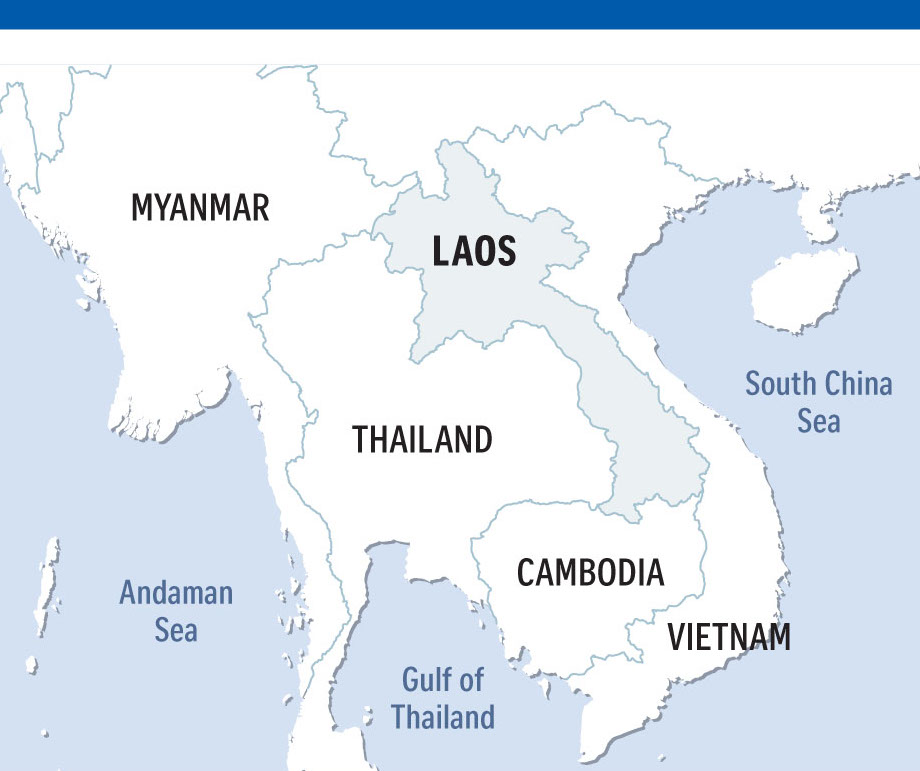Aim is to speed up flow of goods into Asean, with hub serving as central node for goods from outside grouping.
A group of Singapore businessmen is hoping to turn Laos’ geographic location from a weakness to a strength by boosting its connectivity to the rest of the region.
While the landlocked nation of 6.7 million people lacks access to the sea, Laos is centrally located in the middle of Myanmar, Thailand, Cambodia and Vietnam, making it an attractive place to locate a trans-shipment hub that serves the entire Asean region, said Dr Robert Yap, Singapore chairman of the Asean Business Advisory Council (Abac).
The plan is for at least one 10ha logistics hub to begin operations in Laos next year, he said.
It comes as Asean leaders meeting here yesterday launched the Master Plan on Asean Connectivity 2025, which aims to enhance the region’s physical infrastructure, institutions and people-to-people ties over the next decade.
Abac, which brings together business leaders from all 10 countries in the grouping, typically meets alongside the annual Asean summits for political leaders that are taking place here this week.
The new connectivity blueprint details five strategic areas for the grouping to focus on: sustainable infrastructure, digital innovation, seamless logistics, regulatory excellence and people mobility.
A hub like the one planned for Laos will check a number of these boxes, said Mr Robert Yap Min Choy, deputy chairman and executive director of supply chain management firm Y3 Technologies, and another Singapore member of Abac.
“We are looking at physical assets but also systems, information flows, and how it can serve the digital economy as well,” he said.
The hub aims to speed up the flow of goods into Asean, by serving as a central node for goods flowing in from other countries like China, before “fanning out” into neighbouring countries. Such a model can streamline shipping and make goods easier to track, as their shipping journey will fork only at the last mile from Laos to the rest of Asean.
The eventual goal is to change regulations to have a single-window system, doing away with the need for different goods documents at each border crossing, said Dr Yap.
“Today, it’s very complicated because coming in to Asean, there are so many borders, and at every border you need different documents,” he said. “Can’t we have one single window that will take you all the way to your final point in Asean?”
The hub project also aims to help lift Laos’ economy by making it a key player in the long-term goal of turning Asean into a single production base, with each member country producing parts and goods according to their strengths.
This goal, one of the key pillars of the Asean Community that was formed late last year, can be achieved only if the “bottlenecks” that are still apparent when one tries to ship goods across borders in Asean are eliminated, said Dr Yap.
“Asean is very diverse, with each country having its own comparative advantage that it can leverage on to produce certain parts in the supply chain,” he said. “But if the logistics and the connectivity are not there, you can’t really do that.”
Making border crossings seamless will thus encourage countries to focus on the areas they can excel in, he added, making the grouping greater than the sum of its parts.
A growing middle class across Asean that is increasingly opting to shop online has also created opportunities in the logistics space, Dr Yap said, adding that this is an area where Singapore can contribute its expertise.
“From the Singapore perspective, we want connectivity: We want the region to be as well connected as possible and to grow as fast as possible,” he said. “And we have expertise in cargo movement and in IT connectivity, so there are a lot of roles that we can play in this area.”
Source: Straits Times



